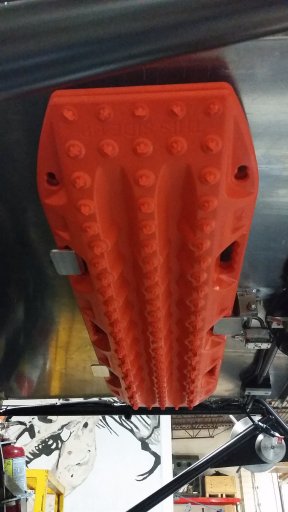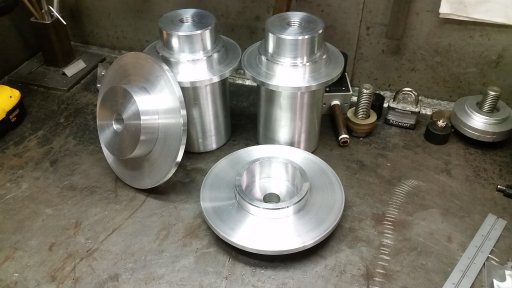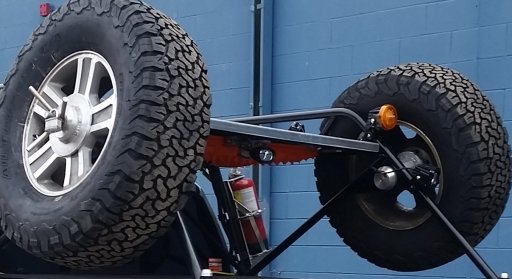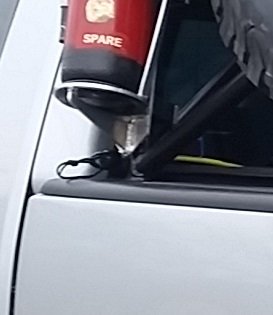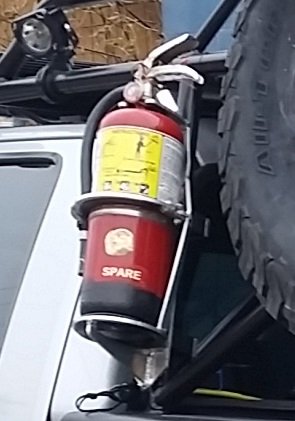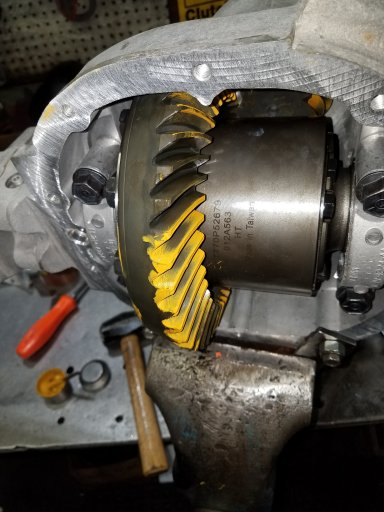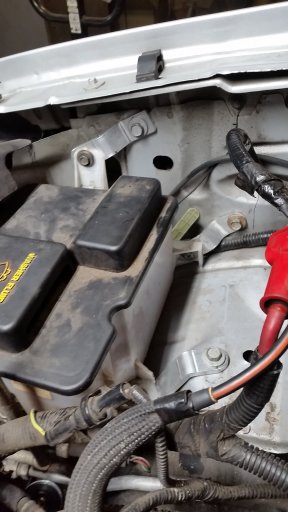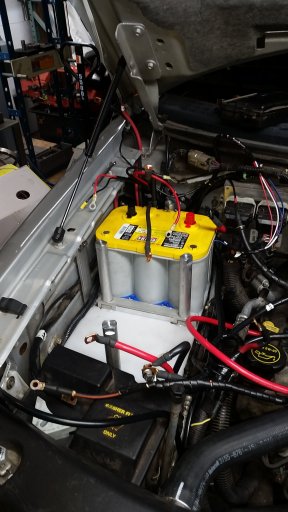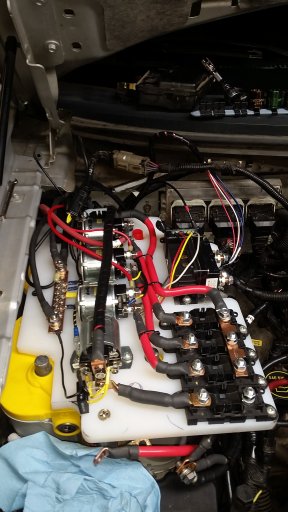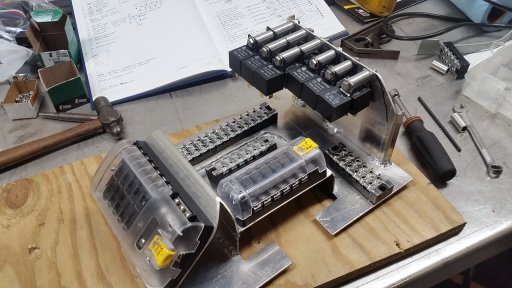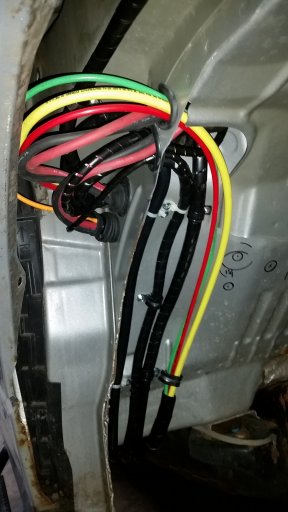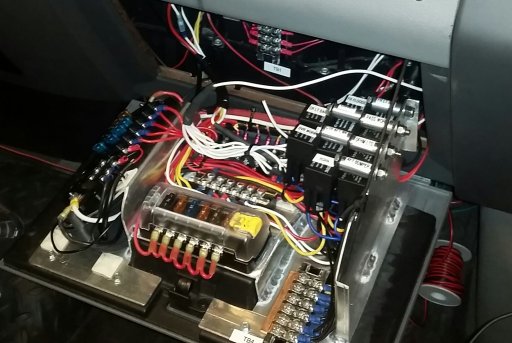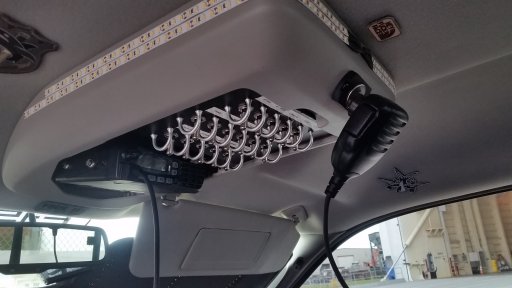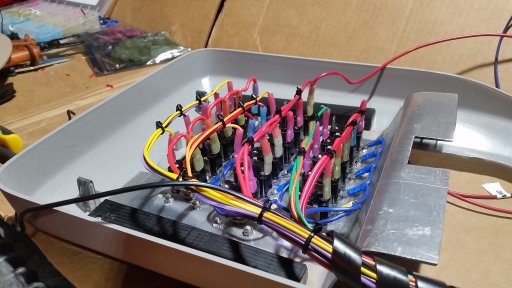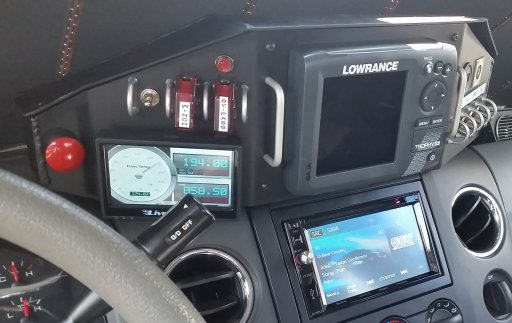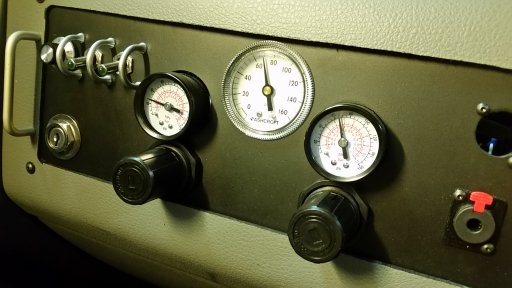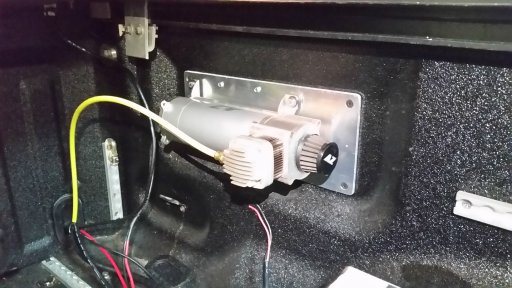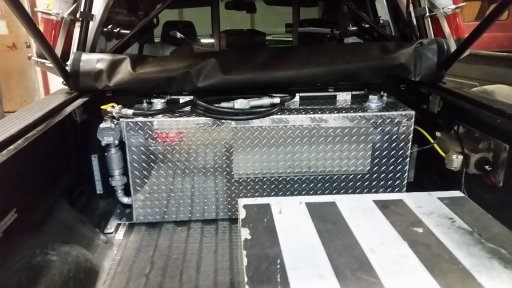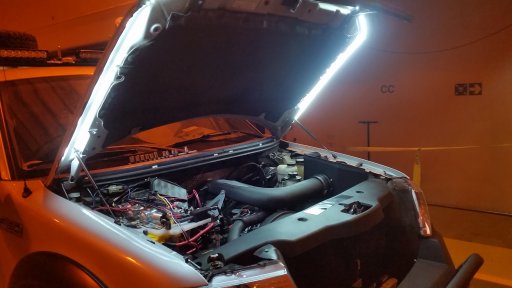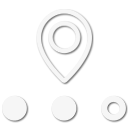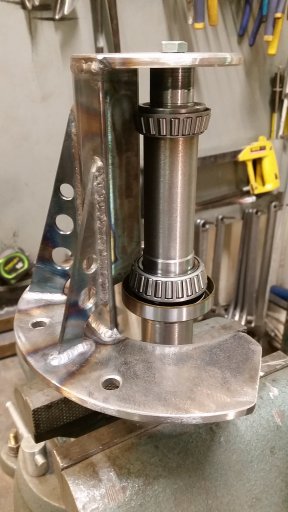The last details of the chase rack were fire extinguisher, Maxtrax, shovel, and wheel mounting as well as quick connect air fittings to plug in an air hose.
The Maxtrax mount is welded to the bottom of the cargo deck and incorporates a 5/8" pin that has a 3/8" cross hole for a pad lock. remove the lock, pull the pin (it can not be pulled all the way out because of a lanyard) and the keeper drops down to release the trax.
The shovel mount (not pictured) is a simple rubber clasp that is just forward of the Maxtrax. While not super accessible, I figured (and was hoping) that it wasn't going to be needed often or in a hurry.
The wheel mounts.... My mental illness showed up in the form of 4 1/4" aluminum bar stock machined / welded to fit the wheels for my F150 and the wheels of the race trucks of my friends...
Quick connect air fittings are tucked next to the cab and are covered to keep dust and debris out of them.
The fire extinguishers are held tight by mounts that I made from aluminum.
The Maxtrax mount is welded to the bottom of the cargo deck and incorporates a 5/8" pin that has a 3/8" cross hole for a pad lock. remove the lock, pull the pin (it can not be pulled all the way out because of a lanyard) and the keeper drops down to release the trax.
The shovel mount (not pictured) is a simple rubber clasp that is just forward of the Maxtrax. While not super accessible, I figured (and was hoping) that it wasn't going to be needed often or in a hurry.
The wheel mounts.... My mental illness showed up in the form of 4 1/4" aluminum bar stock machined / welded to fit the wheels for my F150 and the wheels of the race trucks of my friends...
Quick connect air fittings are tucked next to the cab and are covered to keep dust and debris out of them.
The fire extinguishers are held tight by mounts that I made from aluminum.
Attachments
-
744.3 KB Views: 118
-
1.5 MB Views: 114
-
232.4 KB Views: 118
-
28.5 KB Views: 121
-
49.7 KB Views: 113
Last edited:


